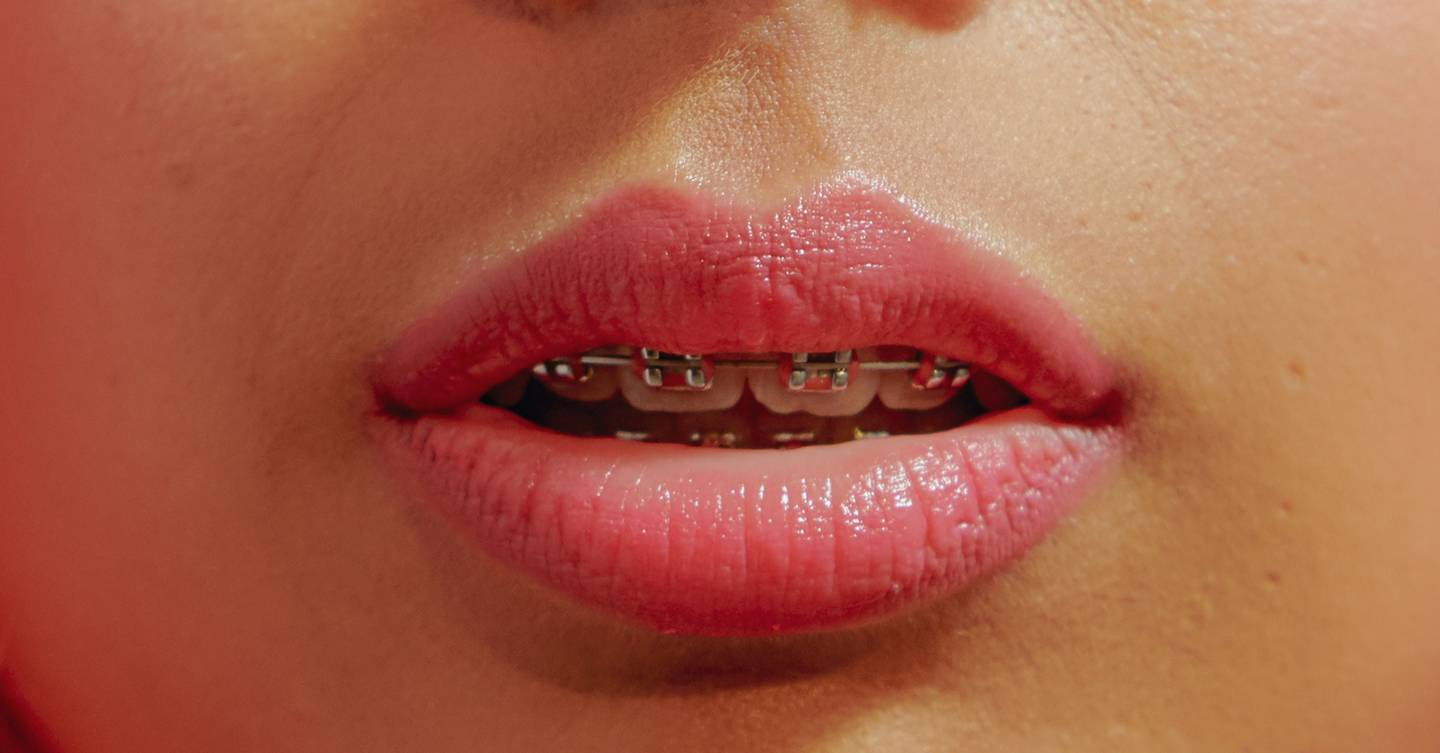They say a smile can light up a room, which is why it’s such a bummer if you don’t like yours. Personally, we reckon smiles come in all shapes and sizes – that’s what gives them personality, hence we’re all for crooked grins and cute gaps. But, we also think you should love your smile and feel confident beaming in those selfies and group snaps.
The problem is, correcting teeth is a slow process that’s a) expensive and b) a little bit awkward which is why it’s understandable that you’d want to do your research and know what you’re getting yourself in for before committing.
We asked Dr Yusra Al-Mukhtar, dentist and founder of Dr Yusra Clinic to talk us through everything you’d need to know before getting braces.
What types of braces are there?
Train tracks
“Train tracks are traditionally known as fixed orthodontic appliances which are fixed to the teeth with a bracket and can come in metal or ceramic tooth coloured brackets, linked together with wires,” says Dr Yusra. “The wires can also be metal coloured or tooth coloured to make them more aesthetically pleasing, and the elastic bands that secure the wire to the bracket can be customised too to create a bespoke effect.”
Lingual braces
“Lingual braces have the same components as conventional braces, but they’re fixed to the back of your teeth, on the tongue — or lingual — side of the teeth. Because they’re behind your teeth, they’re nearly invisible and great for image conscious individuals,” says Dr Yusra.
Clear aligners
“Clear aligners are an alternative to fixed braces, and are plastic, removable and almost invisible to see. Aligners are worn for 22-23 hours a day and put pressure on the teeth to move them into position,” says Dr Yusra. “Each aligner will create small micro movements in the teeth and will be worn for 7-10 days before replacement. The number of aligners you need depends on the complexity of the case and extent of debris crowding.”
What’s the process for getting braces?
“The process starts with a consultation and full face assessment to diagnose accurately the cause of the problem and the relationship between the upper and lower teeth and the upper and lower jaw. Treatment options are then discussed as well as costs to empower you with all the information and enable to you make the right decision for you,” says Dr Yusra.
“Photographs and impressions or moulds of your teeth are then usually taken, and these can be digital or silicone moulds, to create stone casts of your teeth that allow precise measurements to be taken and appropriate planning,” she adds.
“On the day of fitting, white filling material known as composite is placed on your teeth which act as attachments for the braces. The types of attachments will vary depending on if you are having fixed orthodontics or clear aligners,” Dr Yusra says.
“You will usually need a check up with your orthodontist every couple of months where new moulds may be taken or the wires changed and braces tightened.”
How long does will the braces take?
“Depending on which type of braces you opt for, you may see results in as little as 6 weeks or as long as 2-3 years. When the happy day comes for completion, the white filling material that was initially placed on the teeth called attachments are removed and the teeth are cleaned. Any discolouration of the teeth can be improved through scaling, polishing or professional teeth whitening,” explains Dr Yusra.
What are the downsides to braces?
They can be uncomfortable
“Orthodontic appliances work by placing pressure on the teeth which in turn create a pressure in the bone holding the teeth in place to remodel and allow the teeth to move into their new position,” says Dr Yusra. “The pressure can result in tenderness in the teeth during the adaptation process which usually takes 5-10 days until the teeth start making the first movement and the discomfort subsides.”
You might notice some lisping
“It’s normal to notice mild changes in speech such as lisping or excess salivating whilst your tongue and mind adapts to the new (not edible) material in your mouth,” Dr Yusra says.
Food can get stuck in them
“If you opt for fixed braces, cleaning can be tricky as the wire and brackets can attract food. Debris can get stuck between the braces which requires careful cleaning with interdental brushes after each meal,” explains Dr Yusra. “With clear aligners, they need to be removed for eating, you just need to be mindful not to wrap them in tissue and mistakenly throw them away.”
What are the upsides to braces?
“Braces are a conservative, well-researched and effective method to align crooked teeth with beautiful, life-changing and empowering results for many patients enabling them to smile with confidence,” says Dr Yusra.

